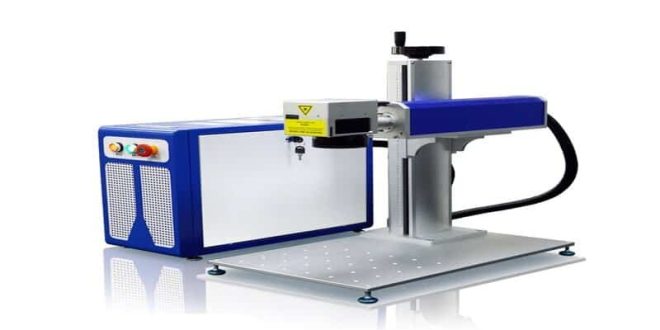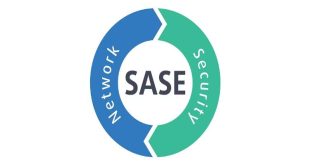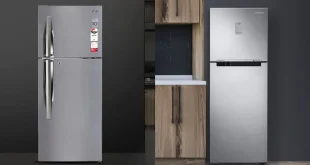Understanding Fiber Laser Technology
Fiber laser marking is a technique used to permanently mark materials with text, symbols, or images. This marking process uses focused lines of laser light, eliminating the need for direct contact or the use of inks. Fiber laser marking is a high-speed, high-accuracy, and long-lasting marking technique. This technique is used in the aerospace, automotive, electronics, and medical equipment manufacturing industries, among others.
If you are looking for more information about the Fiber Laser Marking Machine – UDTECH, go here right away.
How Fiber Laser Machines Work
Fiber laser marking machines work by transmitting a high-frequency laser beam through optical fibers. The laser beam, through a set of high-end optical equipment, is directed to the surface of the material that is to be marked. The marking is done through surface modification via annealing, ablation, or engraving. The laser beam can be adjusted in speed and depth depending on the type of material. This laser marking process is non-contact and very rapid, thus causing very small amounts of thermal injury to the material being marked.
View Fiber Laser Marking Machine for sale – UDTECH for More Details
Fundamental Parts of Fiber Laser Systems
There are basic elements that when combined together help achieve precise and efficient marking of Fiber Laser systems:
Laser Source – This is the system’s heart. It is capable of creating a highly concentrated laser beam through diode pumps and doped optical fibers.
Galvo Scanner – This system pivots the laser beam to the surface of the material through the use of responsive mirrors for advanced accuracy in fine movement.
Focusing Lens – The accuracy and consistency of marking is ensured by this lens, which focuses the laser beam to a certain position.
Control System – This is the system that programs the marking process in the software. It manages the speed, power, and pattern of the marking.
Cooling System – Most Fiber lasers maintain reliability and optimal working temperatures through the use of air cooling.
The above-mentioned elements are what make Fiber laser marking systems multifunctional and capable of serving for varying industrial and commercial purposes.
Applications of Fiber Laser Marking
Industries Employing Fiber Laser Engravers
Fiber laser engravers are popular in the engraver industry owing to their precision, speed, and flexibility. In the automotive industry, fiber laser engravers are used to mark components with serial numbers, barcodes, and logos, improving compliance and industry traceability. In the electronics industry, fiber laser engravers mark circuit boards and small electronics with QR codes and elaborate engravings. Fiber laser engravers are also very pertinent in the medical field because of their ability to engrave high-contrast permanent marks on surgical instruments, medical devices, and implants.
Common Applications of Laser Marking Machines
Laser marking machines, being very versatile, are readily available for use in various applications. They are preferred for engraving serial numbers, barcodes, and QR codes on various materials such as metals, plastics, and ceramics. They also serve braiding purposes for marking company logos and designs on products for promotional and identification purposes. These machines are also very efficient in adding permanent alphanumeric, graphical, and artistic designs on industrial tools, jewelry, and customized gift items. Their contactless marking ability without any alteration on the surface being marked provides support for their use in multiple applications.
Portable Fiber Laser Machines
Portable fiber laser machines easy and quick to use without compromising the quality of the finished products. These machines are less cumbersome and can easily fit into the trunk of a car to be driven to a specific worksite. Their marking capabilities are outstanding, even beating competitors. These machines can easily score and engrave on various materials, including metal, plastics, and even coated surfaces. Portable fiber laser machines are also very economical and cost-effective for laser marking and engraving across a wide array of use cases. Also, their very low energy use and very low upkeep requirements minimize the operational costs and hassle.
Benefits of Using Fiber Laser Marking Machines
Precision and Accuracy in Engraving
The precision and accuracy of fiber laser marking machines are unparalleled. Advanced lasers are able to engrave very finely detailed creations with sharp clarity. Such accuracy permits even the simplest of lettering and complex designs to be achievedin untarnished perfection. This suggests that the engravings are very complex. Thus suitable for use in the jewelry, electronics, and medical device industries as the machines are able to engrave to precision. The machines also have very low error margins. This translates to the company maintaining adequate quantity and quality control.
Cost-Effectiveness and Efficiency
The laser machines notable for their superior, low cost, and operational dependability. The machines complete marking tasks to laser accuracy at high speed, thus their marking machines boost production levels and operational excellence. Moreover, fiber laser machines for sale have energy-efficient models that use minimal energy. This translates to high operational cost savings. The machines above also require little upfront and corrective Maintenance. This makes the laser engravers suitable for investment as the returns are high.
Durability and Lina Duration of Markings
While laser engraving is precise, durable, and unprecedented in its precision and durability, the absence of any scoped wear, corrosion, and fading in typically challenging environments, accentuates how challenging environments do not warrant the durability of the laser engravings. This is why the fiber laser is strongly advocated in engraving medicine, aerospace, and automotive. Markings being laser-engraved on such devices would be engineered, else they’d have no reliability in the mark, and no compliance in the use of geo belting. Track and identifying products will span far and wide, tracing and identifying for decades, therefore sustaining.
Features to Consider in Fiber Laser Engravers
Power Ratings: 20W vs 30W Fiber Lasers
What is Power Rating? What is the difference between 20W and 30W Fiber lasers? 20W and 30W are the power ratings of the most common lasers, as far as the industries are concerned, as both serve different purposes based on the application. As far as the laser 20W is concerned, it is enough for engraving things on surfaces where the substrate is metal or plastic like a barcode, logo or serial number. Cost is also a consideration for very shallow or very quick engraving. 30W laser, when used on less powerful and slower speed engravings on steel and titanium, is useful. The decision rests individually on the material, type of engraving, or volume of construction that is needed.
Comparing Galvo and MOPA Technologies
While both engraving technologies use fiber lasers, each specializes in specific marking and engraving types. Galvo fiber lasers pivot beams with high-speed mirror galvanometers, making them suitable for high-speed marking of logos, text, and patterns onto flat surfaces. Their use case is in manufacturing as they are designed for high efficiency. MOPA (Master Oscillator Power Amplifier) fiber lasers are more versatile in that they can be set to lower pulse frequencies. This feature enables marking on materials like colored plastics and some metals and achieving more contrast. MOPA is capable of rendering stunning, vibrant colors on stainless steel, an effect that cannot be achieved with Galvo systems. This feature broadens MOPA’s application to decorative engraving. Choosing the right technology is dependent on the application and complexity involved.
Defining The Importance of Dual and Rotary Options
When selecting a fiber laser engraver, dual and rotary options are still pretty much dual and rotary options and are still pretty much essential for years to come for businesses with a wide range of marking requirements. Dual laser setups with rotary laser engravers allow for different laser machines to be configured and interchangeable easily and conveniently, marking out a multitude of more engravables without the need to machine switch. The increase in operational output and productivity possible with this setup is immense. In contrast, dual laser setup rotary attachments are necessary for engraving objects with symmetry like rings, tubes, and even bottles. Decent rotary laser engravers for sale allow for hands-free operations, marking directly and with control to the engraved surface, giving consistency with curved engravings. For businesses and industries professionals with rounded surfaces and multi-material associated laborers, the results and professional setups achieved with these options are undeniable.
Maintenance Tips for Fiber Laser Machines
Basic Maintenance Practices
Maintenance is pivotal to maintaining the efficiency of the fiber laser machine and to increasing its lifespan. Start with the lenses and mirrors. Cleaning is essential to make sure the focus beam is able to fire and hit the target without any distortion. Use only the prescribed cleaning equipment and avoid cleaning solutions since the optics are fragile. Look after the cooling system and its performance. Make sure the filters are clean and the coolant levels are adequate. Also, make sure the residue and the contamination outside the machine and the working area are clean. Minimally, the machine instructions with regard to moving and lubricating parts need to be followed.
Resolving Common Problems
With the best practices, problems may still prevail. For instance, if the lasers are weak, check the lenses and mirrors for dirt or misplacement. Make sure the cooling system is working so the system does not overheat. Double-check the focus set and the material flatness if the engraving depth is shallow. Look at the cables and the cartridges to check for any electrical problems. The best practice is to consult the machine handbook and devise a manual to serve as a guide.
Improving the longevity of your fiber laser machine is paramount. Follow a strict maintenance schedule and promptly address any issues of wear and tear. Utilize only trained staff and purchase the best quality replacement parts. Maintain the machine within the operating specifications and do not overuse the machine, as this will put your components at risk. Protect the machine from extremes of temperature and humidity, and service the machine in a cool and dry place. Finally, do not forget to periodically update the machine’s software and firmware. In doing so, performance is improved and compatibility with newer features is maintained. Following these steps ensures reliable operation for many years.
 Naa Songs
Naa Songs




